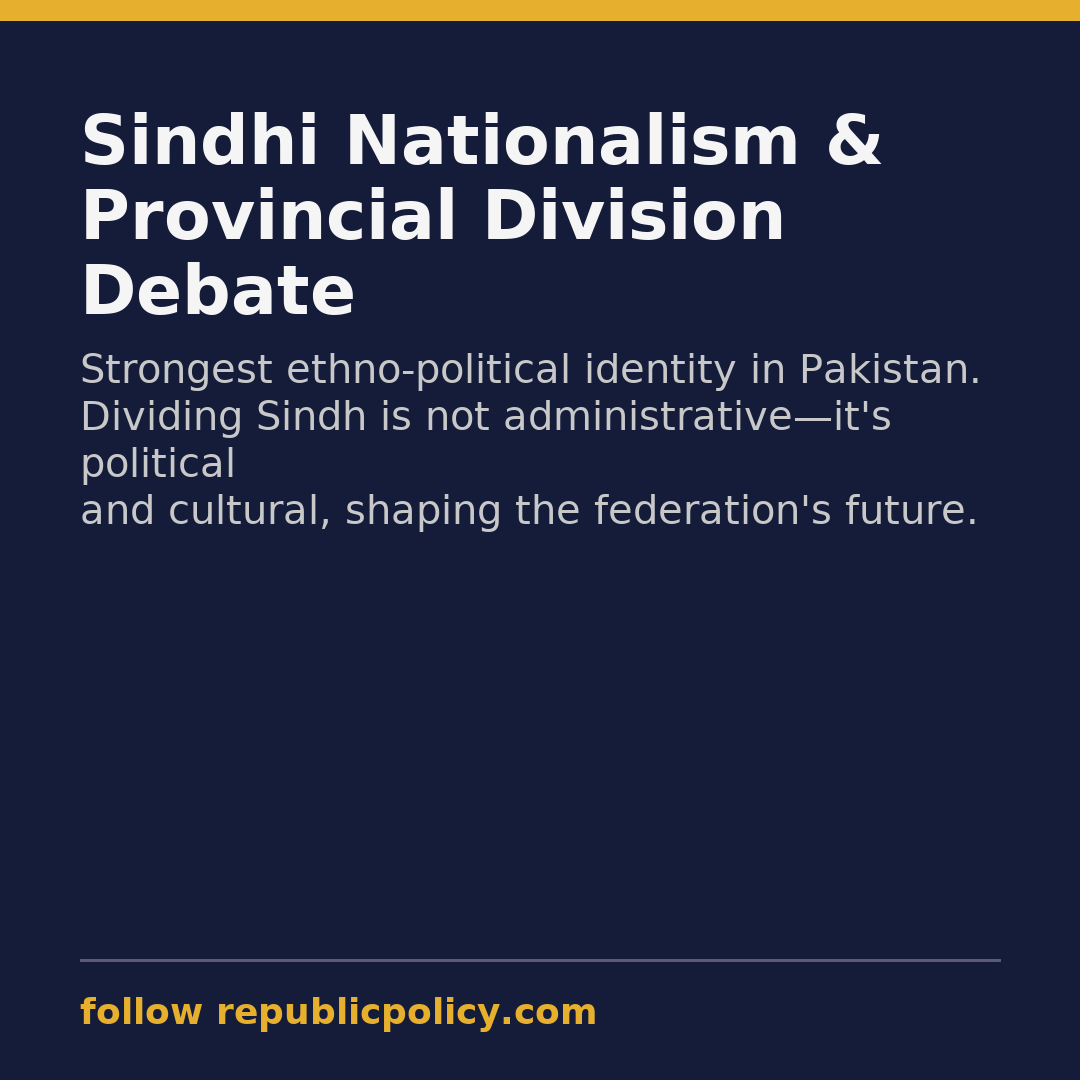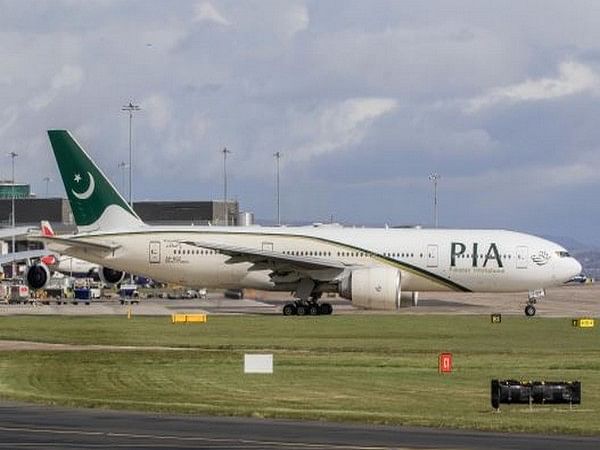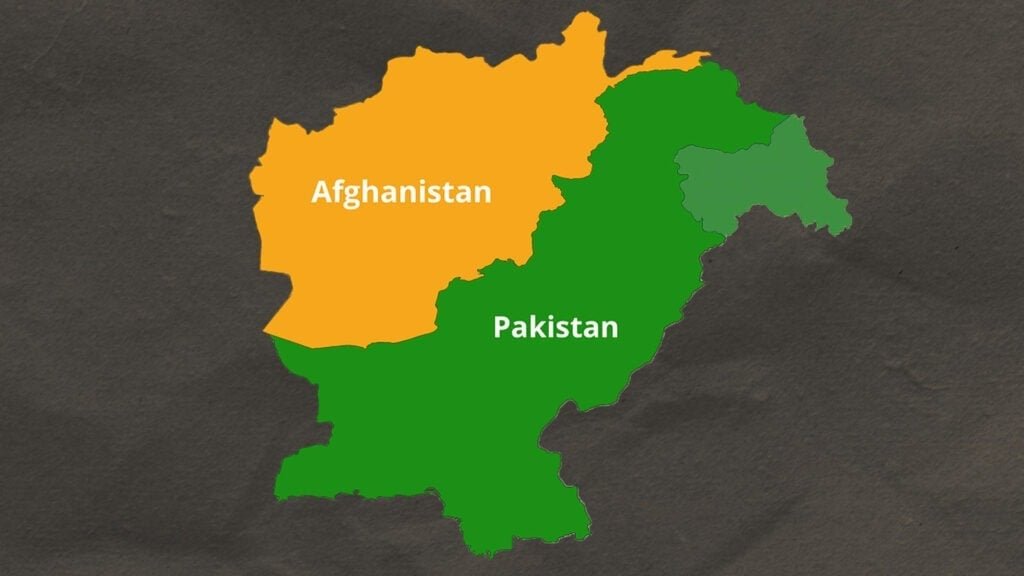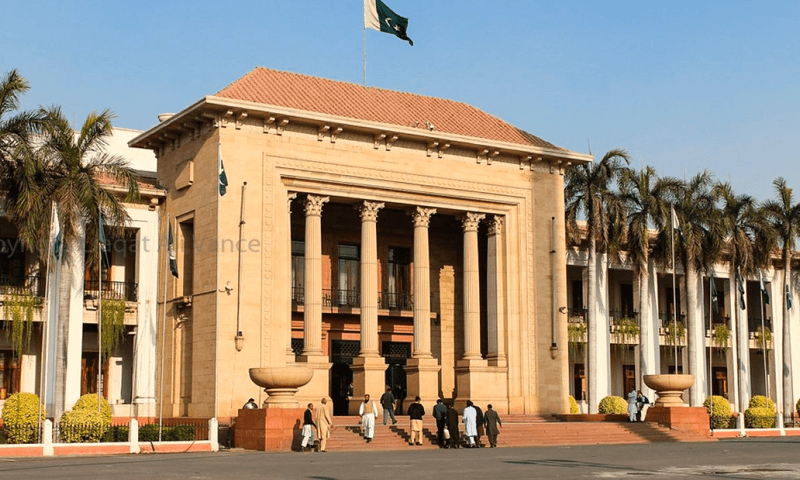Mohsin Junejo
The debate over creating new provinces in Pakistan has resurfaced in recent years, driven by questions of governance, representation, and equity within the federation. While South Punjab, Hazara, and other regions frequently appear in political conversations about administrative restructuring, Sindh presents a uniquely sensitive case. The reason is clear: Sindhi nationalism remains the strongest ethno-political identity in the country, deeply rooted in centuries of cultural continuity, linguistic pride, and historical consciousness. Sindh is not perceived merely as an administrative unit but as a cultural and political nation within Pakistan, and that reality makes any suggestion of division politically explosive.
Sindh’s identity has always been remarkably cohesive. Unlike in Punjab or Khyber Pakhtunkhwa, where ethnic and regional cleavages have generated demands for new provinces, Sindh has preserved an integrated identity across its diverse communities. This inclusiveness has historically absorbed migrant groups and tribes, weaving them into the Sindhi fabric. Even Karachi, today’s bustling metropolis, derives its original name “Kolachi” from a Baloch tribe, reflecting how Sindh historically absorbed outside influences into a wider Sindhi identity. Such continuity underscores that Sindh’s unity is not only political but civilizational. For this reason, the idea of dividing Sindh is perceived by many as an attack on the very existence of Sindhi nationhood.
The political implications of this debate are immense, particularly for the Pakistan Peoples Party (PPP). As the dominant party in Sindh, the PPP has positioned itself for decades as the custodian of Sindh’s rights. Supporting a division would be tantamount to political suicide, alienating its most loyal base. At the same time, outright rejection of new provinces risks complicating its image in national debates about federal equity. This explains the PPP’s calculated silence, for any clear position—either in favor or against—carries heavy political costs. Yet the party’s eventual stance will be decisive, for without PPP’s position, the debate over Sindh’s division cannot translate into serious national policy.
From the perspective of federal governance, Republic Policy research supports the principle of creating new provinces in Pakistan. A federation of nearly 250 million people cannot function effectively through only four federating units. However, any restructuring must be identity-driven rather than purely administrative. The Indian model provides a relevant comparative case: provinces in India were reorganized along linguistic and cultural lines, a move that strengthened, rather than weakened, the Indian federation. In Pakistan, where ethno-linguistic identities are powerful, recognizing and institutionalizing them within the federal structure could serve as a stabilizing force. The challenge, however, lies in Sindh, where identity is so strong that it actively resists fragmentation.
Sindh therefore emerges as the ultimate test case of Pakistan’s federalism. While demands for South Punjab or Hazara provinces are largely rooted in grievances of neglect and uneven development, Sindh’s nationalism is different: it is existential. For Sindhis, division is not an administrative matter but an existential threat to their historic unity. This explains why proposals to carve out Karachi as a separate province or to divide Sindh on linguistic lines routinely trigger widespread backlash across Sindhi society. In this sense, Sindh is not just one province among others—it is a barometer of whether identity-driven federalism is possible in Pakistan.
The historical context further highlights the stakes. The dismemberment of Pakistan in 1971, which led to the creation of Bangladesh, was the result of denying ethno-linguistic identity its due recognition within the federation. That tragedy remains a cautionary tale for Pakistan’s statecraft. Unlike Bengal, Sindh has remained committed to Pakistan, but its nationalism has always been protective of its territorial and cultural unity. A division of Sindh pursued without consensus could inflame nationalist sentiment in ways that weaken, rather than strengthen, the federation. The lesson of history is that federalism thrives when identities are recognized, not suppressed.
In navigating this complex question, the PPP’s role will be pivotal. If it adopts a rigid posture of opposition, the debate will remain stalled, deepening frustrations among those advocating for broader federal reform. If, however, the PPP can articulate a vision that reconciles Sindhi nationalism with inclusive federalism, it could open pathways for constructive restructuring. Yet such a position requires not only political courage but also innovative thinking about how identity recognition can coexist with administrative efficiency. In essence, the PPP must choose between preserving its provincial dominance and contributing to a national project of federal strengthening.
WhatsApp Channel: Republic Policy
The debate about dividing Sindh therefore transcends provincial boundaries. It raises fundamental questions about Pakistan’s federal future: Can new provinces be created without destabilizing entrenched identities? Can ethno-linguistic nationalism be recognized within a constitutional framework rather than being treated as a threat? And most critically, can Pakistan’s political elite learn from history and pursue federal reform as a project of inclusion rather than coercion?
Sindh, with its deeply entrenched nationalism, offers both the greatest challenge and the greatest opportunity. If Pakistan can accommodate Sindhi nationalism within an expanded federal structure, it will strengthen its federation. If it cannot, federal restructuring will remain partial and contested. The path forward requires dialogue, consensus, and an unwavering commitment to democratic federalism. Ultimately, Sindh’s case is not about administrative boundaries alone—it is about whether Pakistan can evolve into a truly inclusive federation where identities are recognized as assets rather than threats.















